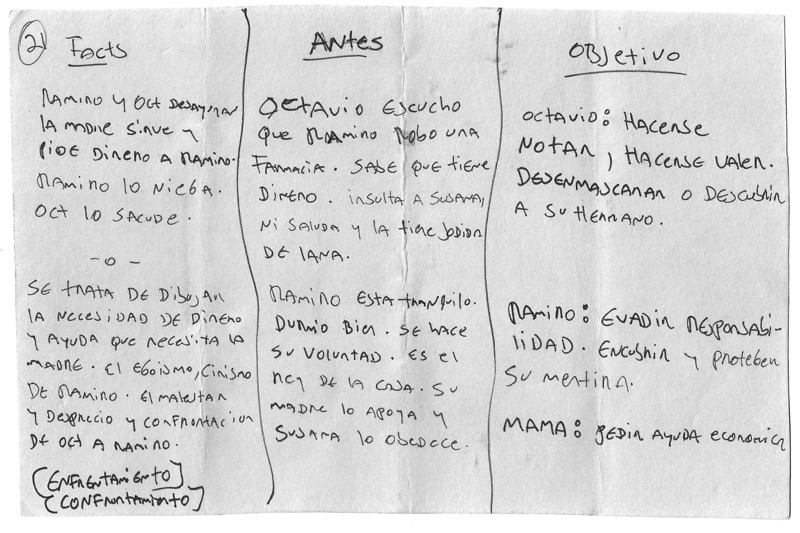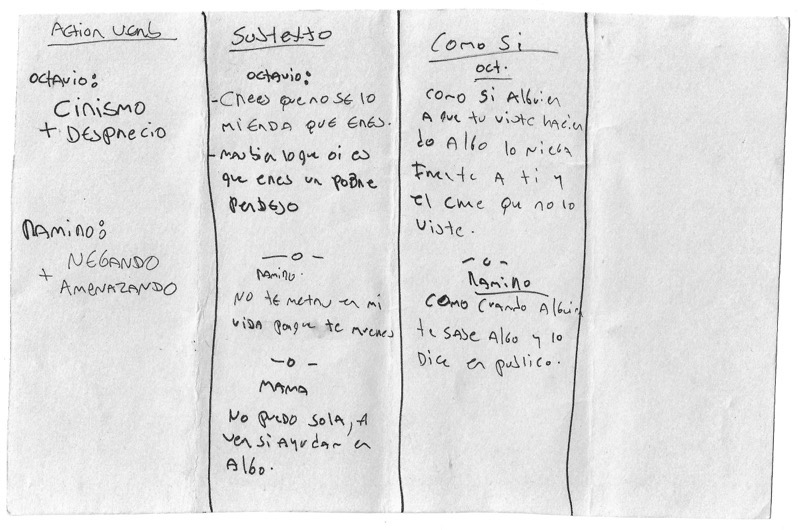movie cards


When preparing to shoot a scene, the film director Alejandro Iñárritu prepares note cards to help him organize his thoughts. ”During the production of a film, it’s easy to lose track of and forget the original intentions and motives that you had three years ago in your head and that are always so important.” Moreover, “As Stanley Kubrick once said, making a movie is like trying to write poetry while you’re riding a roller coaster. When one is shooting a film, it feels like a roller coaster, and it’s much more difficult to have the focus and mental space that one has during the writing or preparation of a film.”
So to forestall these problems, Iñárritu grabs a blank note card and divides it into columns, usually featuring six categories:
- He begins with the facts. “I try to write down the facts in a neutral way. What is happening in this particular scene?”
- “The second part is that I try to imagine what happened immediately preceding the moment in question. Where have the characters come from?”
- “The third column details the ‘objective.’ What is the purpose of this scene? … Here I try to dissect the objective of the scene as a whole and what it’s about, as well as the objective of each of the characters who appear…. Each character has a need, and it’s important for me to know what it is.”
- “The fourth part of these cards — the ‘action verb’ column — is particularly difficult … and extremely helpful, too, in further clarifying a character’s objective so that the actor can execute the scene. If one character wants something from another character, one way of achieving the goal is by seducing the other character. Another way is by threatening him. Another way is by ignoring or provoking him. Within a scene, there can also be several action verbs — these kinds of transitions in tactics for obtaining the same objective are important because they bring a scene to life and add color to it.”
- “The subtext … is often almost more important than the text. The text can often be contrary to the subtext, and the subtext is what should be very clearly understood. In other words, if one person says to another, ‘Go away, I don’t want to see you again,’ it is very possible that what they really mean is ‘I need you now more than ever.' The words we use can often oppose what we feel, and I believe that acknowledging this human contradiction can help give great weight to a performance.”
- Finally, the ‘as if' column. There are two ways I believe one can take on a performance — one is through the actor’s own personal and emotional experience, applied to a scene through an association with it, and the other is through imagination.… I have been in situations where an actor, at a given moment, lacks imagination for some personal reason or does not have emotional baggage that he can refer to. In such a case, I sometimes like to have an image that I can leave with an actor or actress. Our body is the master. Sometimes, with a physical or sensorial experience (a burn, cold, etc.), the actor or actress will know already how that feels, and that can help in channeling that feeling.”